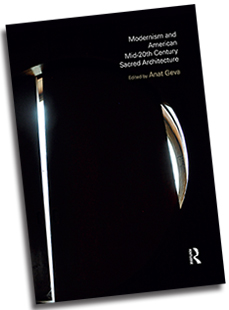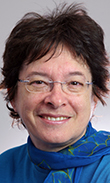New book edited by arch prof explores Modernism’s effect on sacred architecture
A new book edited by Anat Geva, Texas A&M professor of [architecture] (http://dept.arch.tamu.edu/) , that challenges its readers to consider how Modern architects sought to create sacred buildings imbued with a divine presence, hits bookstores Oct. 26, 2018.
 The book, “
[Modernism and American Mid-20th Century Sacred Architecture]
(https://www.amazon.com/Modernism-American-Mid-20th-Century-Architecture/dp/1138062804)
,” is a collection of contributions by leading architectural scholars and practitioners from the U.S., Australia, and Europe who investigate how the authority of the divine was communicated through new forms of architectural design in the mid-20
th
century.
The book, “
[Modernism and American Mid-20th Century Sacred Architecture]
(https://www.amazon.com/Modernism-American-Mid-20th-Century-Architecture/dp/1138062804)
,” is a collection of contributions by leading architectural scholars and practitioners from the U.S., Australia, and Europe who investigate how the authority of the divine was communicated through new forms of architectural design in the mid-20
th
century.
“For too long, sacred architecture in modernism has been overlooked and underappreciated. Thanks to Geva’s work, that will no longer be the case,” said Ben Heimsath, principal of Heimsath Architects.
In 14 chapters of case studies, scholars examine the application of modernist form, materiality, and art to religious worship, revealing designer’s solutions that often bridged modernity and tradition.
They describe the unique context and design aspects of designers’ departure from historicism, as well as the renewal of heritage and traditions with groundbreaking structural features, deliberate optical effects and modern aesthetics.
“It may be the most innovative, challenging, and experimental period in the history of sacred architecture,” said Julio Bermudez, professor of architecture at The Catholic University of America.
Geva’s publications include the first comprehensive study of Frank Lloyd Wright’s sacred architecture.
A faculty fellow at the [Center for Heritage Conservation] (http://chc.arch.tamu.edu/) , Geva also studies sacred architecture, architectural design in international, historic, and environmental contexts, historic preservation, and the history of building technology.
Richard Nira
rnira@arch.tamu.edu
Tags
Related Posts

Speakers to discuss preserving Texas sites at CHC confab

Arch prof helping restore original hues of Bermuda houses

CHC documenting Alamo's evolution

Students use digital gear in Italy in fall 2016 CHC workshop

Arch students earn restoration grant for historic building
Follow Us
Facebook Twitter Vimeo Youtube Flickr RSS
Recent Posts

Planning prof heads study of disaster housing aid

A message from the dean

Former student remembered as expert planner

Leading educator named new head of Architecture Dept.






_thumbnail_small.png)
